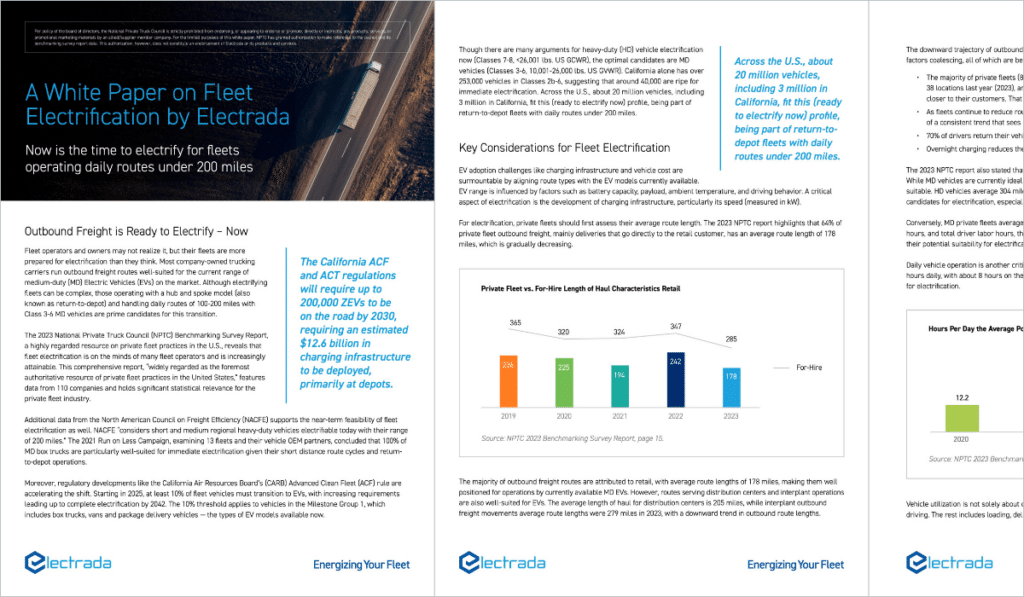Electrada’s latest fleet electrification white paper reveals why fleets operating daily routes under 200 miles are ready to electrify now. Across the U.S., about 20 million vehicles, including 3 million in California, fit the ready-to-electrify-now profile. As state mandates escalate, particularly in California, the demand for EVs and depot charging infrastructure strategies will dramatically increase.
Based on insights from the 2023 National Private Truck Council (NPTC) Benchmarking Survey Report and the North American Council on Freight Efficiency (NACFE), this white paper explores how fleet managers are navigating electrification and why short- and medium-distance fleets should start planning their transition today.
The Road to Fleet Electrification: Insights from the Fleet Electrification White Paper
Fleet operators increasingly recognize the financial and operational benefits of EV adoption. With rising fuel costs, regulatory incentives, and improvements in battery technology, electrification presents an opportunity to reduce operating expenses and improve long-term fleet efficiency. However, significant barriers still stand in the way.
The high cost of charging infrastructure, limited availability of suitable EV models, and concerns over charging logistics have made many fleet managers hesitant to move forward. Without a clear path to adoption, fleet electrification remains a challenge for many organizations.
Electrada’s 360 CaaS: A Smarter Approach to Fleet Electrification
Fleet managers looking to overcome these barriers are turning to Charging-as-a-Service (CaaS) solutions, which eliminate the upfront capital investment of EV infrastructure. Electrada’s 360 CaaS model simplifies the transition by providing a fully managed, cost-predictable solution that allows fleets to adopt EVs without financial or operational uncertainty.

As the momentum pushes toward full electrification, the need for a depot charging infrastructure strategy becomes essential. “The Road to Fleet Electrification” White Paper provides exclusive insights on fleet electrification, exploring how CaaS solutions remove infrastructure roadblocks, ensure seamless charging availability, and help fleet operators transition confidently to electric fuel while minimizing risk and maximizing cost savings.
Get Full Access to the White Paper. Inside, You’ll Discover:
- Why fleets operating daily routes under 200 miles are primed for electrification.
- How 360 Charging-as-a-Service (CaaS) eliminates infrastructure costs and complexity.
- Why medium-duty return-to-depot fleets are ideal for electrification today.



